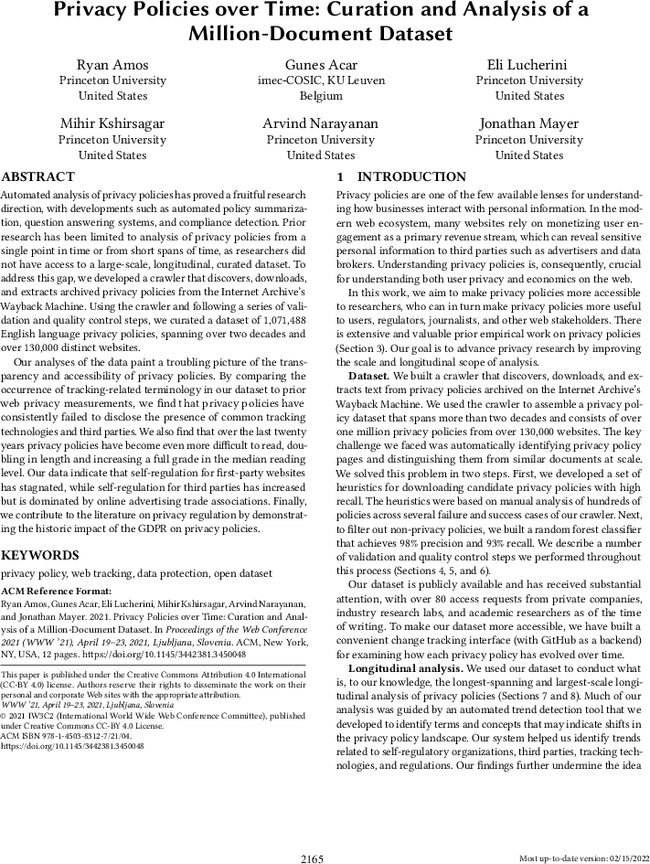Cited By
View all- Kuznetsov MNovikova E(2025)Corpus of Privacy Policies for Web Services and Internet of Things Devices for Analyzing the Awareness of Personal Data SubjectsКорпус политик конфиденциальности веб-сервисов и устройств Интернета Вещей для анализа информированности субъектов персональных данныхInformatics and AutomationИнформатика и автоматизация10.15622/ia.24.1.724:1(163-192)Online publication date: 20-Jan-2025
- Pan SZhang DStaples MXing ZChen JXu XHoang TBalzarotti DXu W(2024)Is it a trap? a large-scale empirical study and comprehensive assessment of online automated privacy policy generators for mobile appsProceedings of the 33rd USENIX Conference on Security Symposium10.5555/3698900.3699218(5681-5698)Online publication date: 14-Aug-2024
- Ganglmair BKrämer JGambato J(2024)Regulatory Compliance With Limited Enforceability: Evidence From Privacy PoliciesSSRN Electronic Journal10.2139/ssrn.4774514Online publication date: 2024
- Show More Cited By


